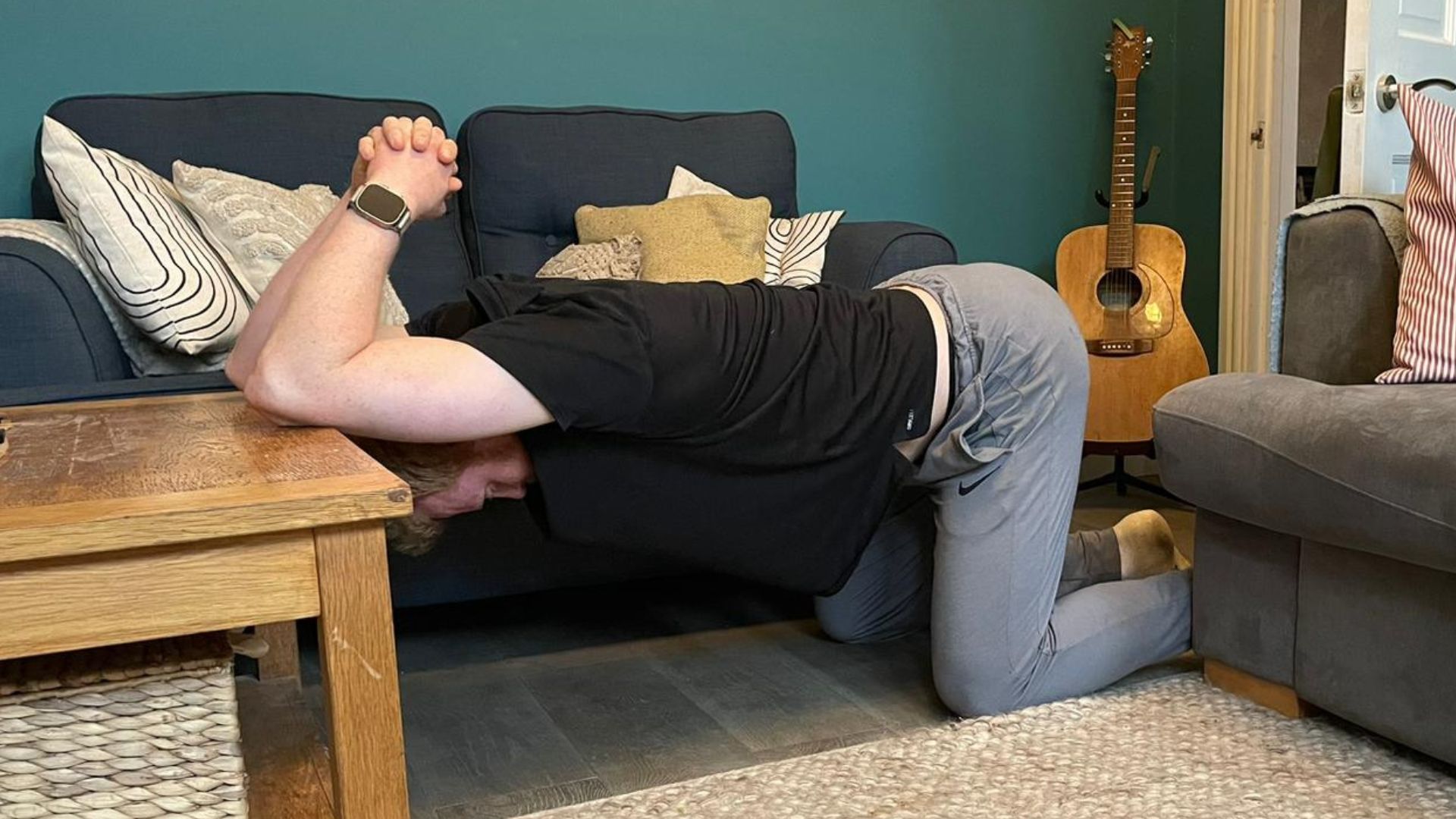An expert says this one simple shoulder stretch is an "essential addition to your routine"—here’s what happened when I did it every day for two weeks
This stretch eased my shoulder pain, helped me sleep in comfort and boosted my mobility after I committed to doing it consistently for a fortnight


Shoulder pain is rubbish. In recent months it’s forced me to avoid certain exercises in the gym, caused daily discomfort and even vetoed certain sleeping positions.
I’ve tried a string of strengthening exercises and stretches to combat this, and found a few favorites which deliver the desired results. In the stretching camp, my standout performer has been the kneeling thoracic extension, demonstrated above.
I found this stretch so effective that I challenged myself to do it every day for a fortnight—and the results were impressive.
How to do the kneeling thoracic extension stretch
A post shared by Harry Bullmore: Fitness Writer (@harry_bullmore_fitness_writer)
A photo posted by on
- Assume a high kneeling position opposite a chair, couch or other sturdy knee-height surface.
- Keeping your back flat, hinge at the hips to bend over and rest your elbows, shoulder-width apart, on the edge of the surface. Make sure you leave enough room to drop your head and chest between your upper arms.
- Bend your elbows to move your hands towards the back of your shoulders, then clasp your hands together or grip a long object like a broom handle.
- Slowly alternate between pressing your chest towards the ground and relaxing, letting it rise back up slightly.
- Continue this for 90 to 120 seconds.
My routine
Sports and injury therapist and Lincs Injury Clinic founder Emma Burgon-Kisby recommends doing this move daily ("if not twice daily") for a minimum of 14 days to feel the benefits. So that’s exactly what I did.
Sometimes I did it while warming up at the gym, other times I did it while watching TV in the evening, and there were occasions where I did it at my desk, but I always got it done at least once per day.
"For maximum benefits, the thoracic extension stretch should be held for 90-120 seconds, and you should be deepening the stretch gradually with every three to five breaths," Burgon-Kisby adds.
My results
I did this challenge so I could get back on track with my CrossFit training. The twinging pain in the front of my shoulder was at its worst during hanging gymnastic exercises like the pull-up and moves requiring me to lift my arm like the lateral raise. I wasn’t willing to give up either of these training staples, so I needed to find a remedy for the pain. Enter the kneeling thoracic extension stretch.
Start your week with achievable workout ideas, health tips and wellbeing advice in your inbox.
I found the range of pain-free motion in my shoulder was at its best immediately after releasing the stretch. As is often the case with stretching, this optimal response was short-lived and my shoulder pain slowly returned during my lifting sessions. However, I carried on with my daily practice and over the course of two weeks I noticed a decrease in my discomfort.
As I mentioned in the intro, I also did strengthening exercises to supplement my mission for healthier shoulders, finding that moves targeting the posterior deltoids (the muscles on the back of the shoulders) had the most impact.
For me, this combination of strengthening exercises and the kneeling thoracic extension stretch worked wonders. My shoulders still aren’t at 100%, but they feel significantly better than they did two weeks ago. Now no exercise is off limits and I can sleep like a baby any which way I want—two huge wins for someone as fond of CrossFit and catnapping as I am.
Benefits of the kneeling thoracic extension stretch
"The kneeling thoracic extension stretch is a transformative tool for improving posture, particularly for people who spend prolonged periods sitting with rounded shoulders while working or driving," Burgon-Kisby tells me.
That's partly because this stretch engages muscles in your back, chest and abs. As these are all postural muscles, activating them will make it easier to maintain a good position when you sit or stand. Plus, the move opens up your chest, making it easier for you to take nice deep breaths.
I was still curious about why the stretch had been so effective in alleviating my shoulder pain. I asked Burgon-Kisby to explain.
"The stretch promotes a full range of movement and stability in the core, which is essential for optimal shoulder mobility," she says. This basically meant that I could properly execute complex shoulder-based moves (like pull-ups and lat raises) because I had access to my full range of motion. As I was doing the moves properly, it meant that I wasn't overcompensating with any particular muscles, which can reduce the risk of injury.
"The stretch also aids in the proper use of rotator cuff muscles for shoulder stabilization during dynamic movements," Burgon-Kisby added, which could also be why it helped so much with my specific shoulder pain.
If you want to try out more stretches to improve your own mobility, I'd recommend reading through these beginner yoga stretches, or having a go at this 15-minute yoga for mobility routine.

Harry Bullmore is a Fitness Writer for Fit&Well and its sister site Coach, covering accessible home workouts, strength training session, and yoga routines. He joined the team from Hearst, where he reviewed products for Men's Health, Women's Health, and Runner's World. He is passionate about the physical and mental benefits of exercise, and splits his time between weightlifting, CrossFit, and gymnastics, which he does to build strength, boost his wellbeing, and have fun.
Harry is a NCTJ-qualified journalist, and has written for Vice, Learning Disability Today, and The Argus, where he was a crime, politics, and sports reporter for several UK regional and national newspapers.